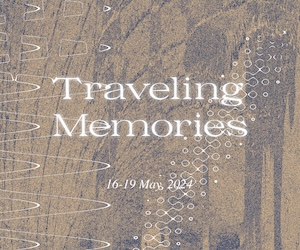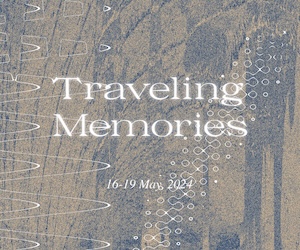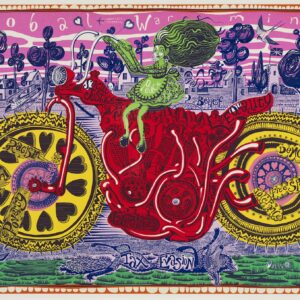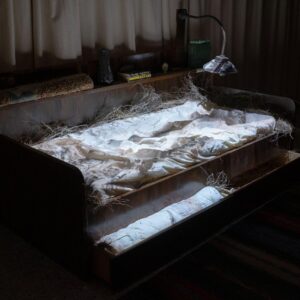
FCB Cadell, Edinburgh
From the impressionable age of 16, the Edinburgh-born painter Francis Campbell Boileau Cadell studied in Paris and it was bound to show. This was after all the early 20th-century era when Paris was art centre of the universe, reeling with joie de vivre from the plein-air perceptual revelations of Manet’s impressionism, before the inspiring innovations of Matisse and the post-impressionists. Back home, Cadell, alongside his Scottish colourist contemporaries, no doubt struggled to translate pictorial techniques bred there to fit the murk of downtown Edinburgh. Yet, in his own less ambitious way, he somehow managed it, picturing the bourgeois sensuousness of the posh Scots sophistications of Edinburgh’s 1920s new town.
Scottish National Gallery Of Modern Art, to 18 Mar
Robert Clark
Miracles And Charms, London
Hailing from either side of the Atlantic and across centuries, the votive offerings, amulets and charms in this thoroughly engrossing pair of exhibitions spin an intricate web of faith and superstition. Mexican “miracle paintings”, from the 18th century onwards, which lined the wall of churches as thanks to saints for crises overcome, give a window on to everyday dramas. Meanwhile artist Felicity Powell has delved into the Wellcome Collection’s stash of age-old London amulets: talismans such as acorns of carved horn to ward off lightning, coral for health, and – more sinister and strange – pointed animal teeth.
Wellcome Collection, NW1, to 26 Feb
Skye Sherwin
Ford Madox Brown, Manchester
There is, of course, something undeniably Christmassy about the work of the pre-Raphaelite brotherhood: the childlike enchantment, the filigree aesthetics of elaborate pattern, the luxurious indulgence in charitable thoughts of the less well off. Indeed it’s now somewhat hard to imagine how Ford Madox Brown’s self-regardingly Romantic colleagues were seen as decadent rebels and conscientious social realists. Brown’s monumental and utterly cluttered attempted masterpiece, Work, a popular permanent centrepiece of the Manchester Art Gallery collection, is here joined by some 140 choice pieces in the first major Brown exhibition since 1964. Among them is the honestly modern 1952 An English Autumn Afternoon, a personable view from the back window of Brown’s Hampstead lodgings.
Manchester Art Gallery, to 29 Jan
RC
Magic Worlds, London
This show exploring magic with toys, tricks, movie props, costumes and fairy stories is a must for fledgling Derren Browns and wannabe Harry Potters of all ages. Where witches, ghouls and sprites were once the preserve of adult superstitions and folk tales, the offerings here track their evolution as children’s entertainment. Music hall marvels such as levitating men and exotic conjurors are captured in antique posters, while parlour games include an early Victorian “fantascope” (a kind of fan, embellished with a spiral of monster faces that make a gruesome whirlpool when spun). Magic touches everything, be it Colman’s mustard merchandising with dragons and moustachioed magicians, or wind-up Cinderella dolls from the 1950s. The most enchanting offerings, though, surely come from the book illustrators, from Victorian fairy painter Richard Doyle’s tangled woods secreting gangs of pale, pointy-eared imps to Wayne Anderson’s decidedly 70s dragon, with its lattice of diamond-shaped scales in oranges, yellows and browns.
V&A Museum Of Childhood, E2, to 4 Mar
SS
Nice Style: The World’s First Pose Band, Leeds
Photographs, postcards, posters and assorted archival ephemera document the early-70s, hardly superstar heyday of a collaborative group of five artists who styled themselves as early proponents of the tradition of “living sculpture” – Bruce McLean, Paul Richards, Gary Chitty, Robin Fletcher and Ron Carr. Despite first impressions, this lot were collectively all more arty sophisticates than new romantic losers. Nice Style took the already pretty kitsch role-play of 70s pop and treated it to a heady dose of knowing, art-world irony. Bringing the 19th-century tradition of tableaux vivants up to date in the age of T.Rex and the Bay City Rollers, they attempted at least to turn posing into a fine art.
Henry Moore Institute, to 12 Feb
RC
Royal Manuscripts, London
These illuminated manuscripts, coveted and collected by English monarchs of the middle ages, look back to a time when books were luxury objects, housing gilded wisdom. Alongside bestiaries, prayer books and studies of humanist thought, there are plenty of “how tos” for the budding monarch, including how to be a good king (check out Solomon, David, Caesar and Alexander) and how to stay hygienic and healthy. The illustrations, lit up in precious gold leaf and the deep blue of lapis lazuli, are as bright now as they were hundreds of years ago. While the ideas can seem fascinatingly distant – a hot maiden to cure stomach ache? – the books close the gap between then and now, rendering the values and aspirations of the medieval ruling class vividly alive. You can even see Cardinal Wolsey’s Bible, bearing his jottings in the margins relating to Henry VIII’s divorce.
The British Library, NW1, to 13 Mar
SS
Pieter Brueghel The Younger, Aberdeen
In this nicely timed show for the festive season, the Flemish Renaissance painter, nicknamed Hell Brueghel for his morbidly apocalyptic fantasies, is seen to have a gentler side. It’s a small display of works selected from the gallery’s own permanent collection and on loan from Angus museums. Apparently the paintings’ first Scottish owners appropriated them (legitimately) from Spanish collectors following the Napoleonic wars, whence they were brought back to Britain bundled up with war booty. But the images are all grace, good humour and the relative peace and quiet of a moderate moral parable. Typically charming is The Faithless Shepherd, in which the shepherd is shown scarpering as a wolf tucks in to one of his lost sheep beneath a sky of cobalt clouds. It’s a masterful Brueghel composition, leading the eye along a zigzag path to a windmill perched pertly on the distant horizon.
Aberdeen Art Gallery, to 19 Feb
RC
guardian.co.uk © Guardian News & Media Limited 2010
Published via the Guardian News Feed plugin for WordPress.










